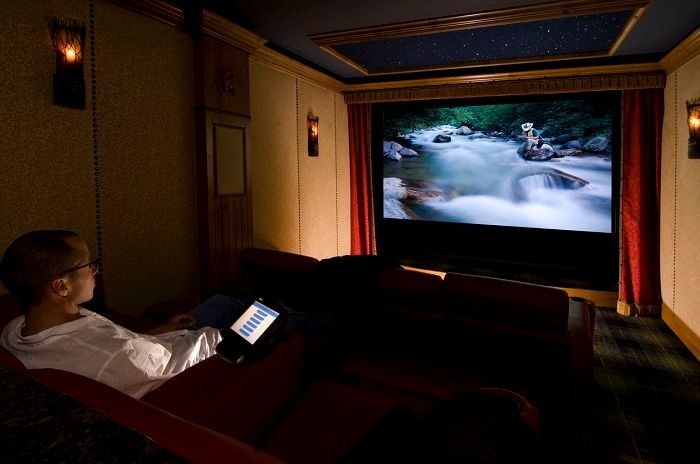Seating
Seating is one of the most important elements of an enjoyable home-theater experience. Tiered systems that imitate a sloped theater ensure that everyone can view the screen. You’ll want to place seats far enough away from the screen so that viewers are not overwhelmed by the screen size.
Many options are available for materials and design to ensure everyone has a comfortable seat in the house. And with features such as USB charging, built in LED lights, and more, personalizing your home theater can provide you with a seating experience much better than movie theaters can.
Lighting
To embody the true theater setting, you’ll want your room to have as little ambient light as possible, as more light reduces your ability to see the content. That is why dedicated home theaters typically do not have any windows in the room.
That being said, accent lighting to help minimize eye fatigue, rope lighting to improve the ambiance, and having it all controlled by the same system that controls your audio video will help make it easy to push one button and have everything set up perfectly and ready to go.
Screen Type and Size
There are many options when choosing a screen for your home theater, such as a flat-panel display or a projector with a fixed, electric, or auto-masking screen. If you’re going with projection, depending on the length of the room, learn whether your room is more suitable for a high-throw or short-throw projector.




